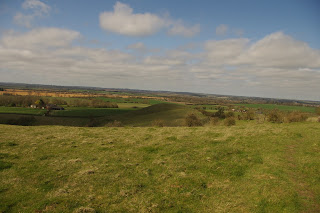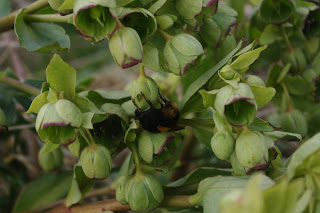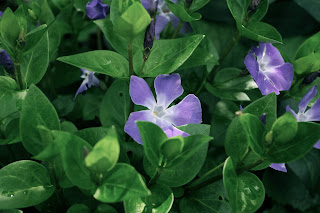Walking from Pirton yesterday I took a track that runs uphill to Knocking Hoe. I noticed a clump of greenery that looked like some kind of Spurge or Laurel. As it was on the outskirts of the village I took it to be a garden escape.
I noticed more such clumps all the way along the scrubby hedgerow and woods which bordered the track. Then the penny dropped. This is one of our native shrubs which for obvious reasons is known as Spurge Laurel (Daphne laureola). The common name is misleading however. It is neither one of the Spurges nor one of the Laurels and belongs to the family Thymeleaeceae.
The typical habitat is exactly where I saw it: hedgerow and woodland on chalky soil.
































